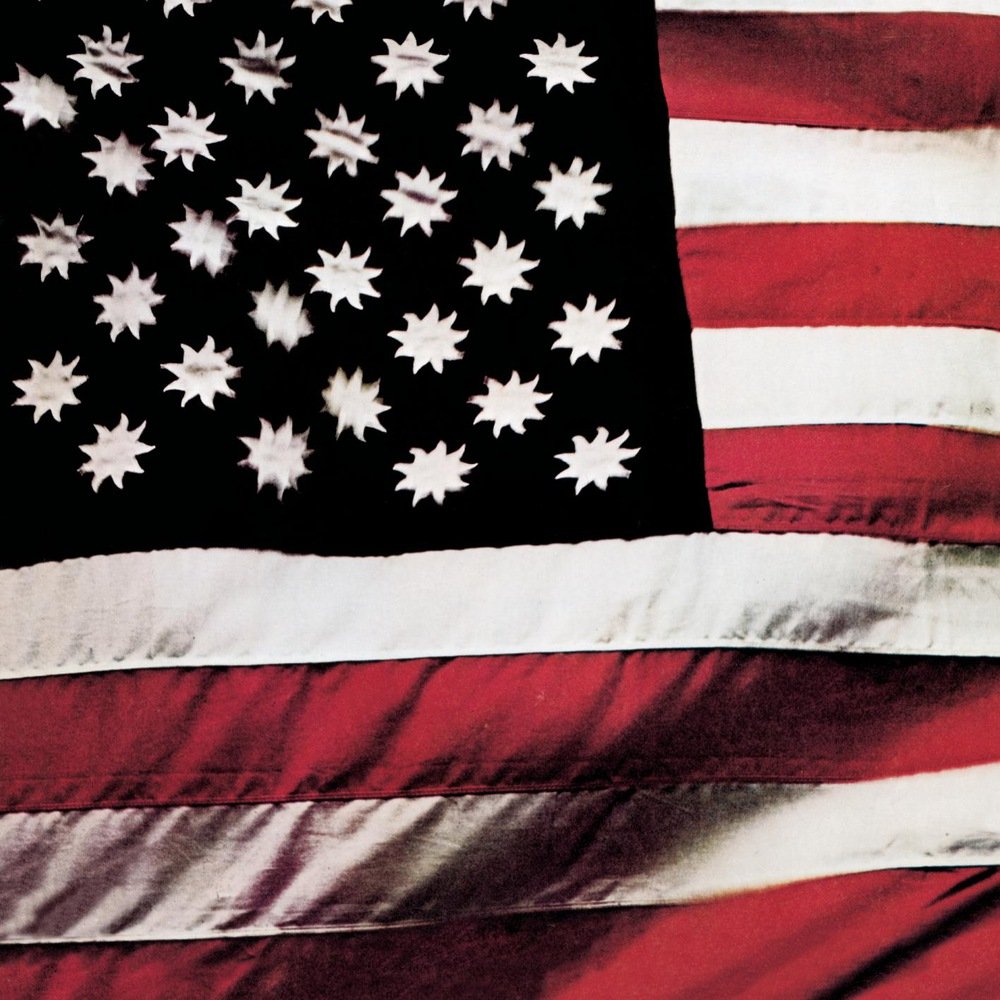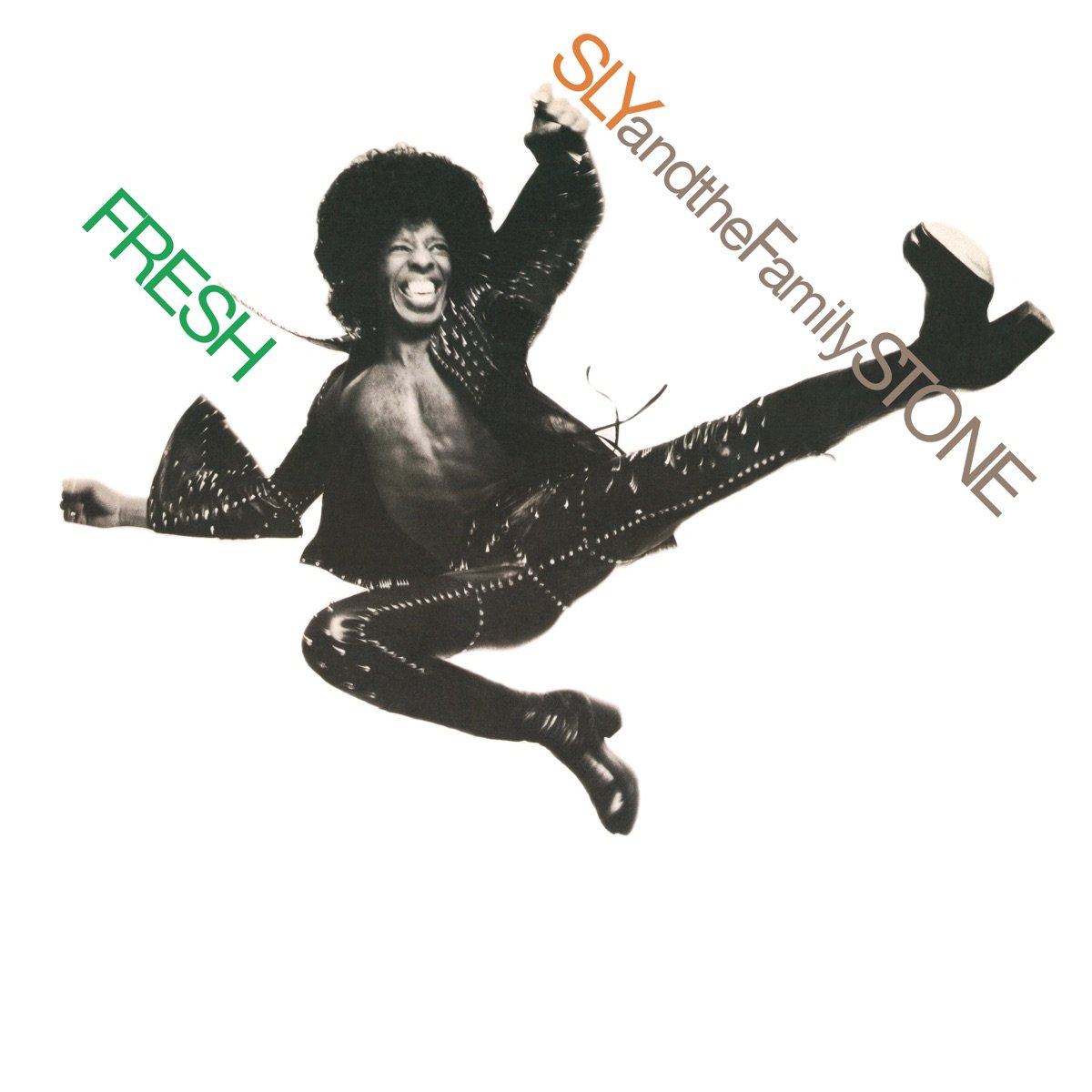Happy 55th Anniversary to Sly and The Family Stone’s fourth studio album Stand!, originally released May 3, 1969.
At approximately 3:30 a.m. on Sunday, August 17, 1969 at the Woodstock Musical Festival, Sly and The Family Stone took it to the stage. These days, I can’t imagine doing much of anything coherent at 3:30 a.m., but here, during the smallest of the small hours, the members of the seminal soul/funk/rock group got up and rocked a crowd of approximately 400,000 people.
Sounding fresh and sharp as they would ever sound on stage, Sly and The Family Stone gave one of the best performances of the three-day festival and one of their greatest live performances as a band. At one point, they famously got the absolutely massive crowd chanting “HIGHER!” while throwing up the peace sign. Even listening to the audio, the electricity is palpable.
Countless historians and musicologists have written millions of words about the Woodstock concert and the associated sociological conditions that made it what it was, but I like to think those 50 minutes on stage by Sly and The Family Stone could be considered the high water mark of the high water mark of the late ’60s. During an event that’s become synonymous with music serving as the vessel of peace, love, and togetherness, Sly and the Family Stone radiated all three.
Part of what brought the collective to that moment in time was Stand!, the group’s fourth album, released 50 years ago. The San Francisco-based assemblage of musical pioneers had been releasing albums since the mid-1960s. The gathering of musical minds became proprietors of psychedelic soul in 1966, led by former DJ and overall genius multi-instrumentalist Sylvester Stewart a.k.a. Sly Stone. One of the first notable bi-racial bands that also featured men and women, their ranks included uber-talented bassist Larry Graham, as well as Stone brother and lead guitarist Freddie, and Stone sister Rose, as a vocalist and keyboard player. The line-up also included drummer Greg Errico, trumpeter Cynthia Robinson, and saxophonist Jerry Martini.
Prior to the release of Stand!, the group was best known for rollicking soul and rock jams like “Dance to the Music.” Though they had earned commercial and critical success, the band was coming off the release of their somewhat disappointing third album Life, which had hit shelves in July of 1968. Life was a solid, reasonably light album that was fun but didn’t really break any new ground or sell nearly as many copies as Dance to the Music.
Stand! was Sly and The Family Stone’s best and most commercially successful album of their career. It went platinum in less than a year, eventually selling three million copies and spawning the #1 chart-topping “Everyday People.” The album is one of the defining pieces of musical work of the late 1960s. Whereas the group had dabbled in themes of unity and peace on Life, these subjects became the super-text of Stand!
Listen to the Album:
I was not alive when Stand! became a musical and cultural force. I learned about this album and Sly and The Family Stone from my father, who played it pretty frequently when I was growing up. Over the years, as I’ve come to learn about and listen to the music produced from that era, Stand! endures over all. Even within a year that featured as many great, important albums as 1969, Stand! remains at the top of the heap.
We live in deeply cynical times. We trade in sarcasm and skepticism as easily as we breathe oxygen. So it’s easy to perceive genuine sentiments expressed on Stand! with a jaundiced eye. But the album’s absolute sincerity is refreshing. Stand! is inspiring without ever being didactic, simplistic, or preachy.
Stand! crystallized the spirit of the late ’60s like few other albums have done. It’s a tribute to love, unity, optimism, and equality. Sly and The Family Stone express a deeply held belief that things could and would get better, that Black and white populations could love together in harmony. That you could stand up to the Goliaths in the government and make a difference. That people could make a difference in turning the world into a better place for everyone.
This worldview is typified in the album’s title track. The song leans hard into its message of empowerment, evoking imagery of little people standing tall and giants about to fall, all while encouraging people to remember that they’re free if they want to be. “Stand” is often remembered for its frenzied final third, where Stone decides to shift that tone of the song, recording a thrilling gospel-inspiration coda, with chanting vocals, blaring horns, and pulsing organs.
“I Want To Take You Higher,” the B-side to the single of the title track, is a blistering, blues-heavy ode to the power of music. Amongst the heavy guitars and chants of “Boom lakka lakka!,” Sly and his family implore the audience to allow themselves to be taken to another plane by the sheer force of the composition. “Sing a Simple Song” is another exemplary entry to Stand!. Though the lyrics may be simple by design, the instrumentation is complex and layered. The song’s use of vocals is also excellent, with the band expressing itself through chants and yells.
“Everyday People” is a magnificent piece of work—a perfectly constructed traditional pop song. Before it was appropriated as a jingle to sell Volkswagens, “Everyday People” roused its audience with its message that people could respect each other’s differences and live together. It says more in under two-and-half minutes that many songs twice its length ever attempt. The song is also notable for featuring one of the first instances of Graham’s “slap” bass-playing style, which he’d utilize and perfect throughout his career as a member of the band and as a solo artist.
Even edgier, rougher fare like “Don’t Call Me N***er, Whitey” maintains an underlying message of understanding. The lengthy jam is mostly instrumental, characterized by sinister horns and gritty guitars, as well as a solitary verse by Rose Stone. In lieu of other verses, Sly Stone makes frequent use of the vocoder, transforming his voice into a harmonica-like instrument.
The band really decides to cut loose with “Sex Machine,” the 13-minute instrumental track. Whereas “Don’t Call Me…” is a more structured endeavor, “Sex Machine” is a free-flowing rock/funk jam session. Stone again makes ample use of the vocoder, as all the other members of the group are given a solo, each allowed to cut loose and improvise.
Enjoying this article? Click/tap on the album covers to explore more about Sly and The Family Stone here:
“You Can Make It If You Try” is another stirring call to action, designed to encourage the audience to work to fight against oppression in its many forms. The simple poetry of “Time’s still creeping, especially when you're sleeping / Wake up and go for what you know” is really hard to top. The song is also one of the most musically interesting compositions, with its plucky guitar, rugged horns, and energetic organ breakdown about halfway through the song.
After Stand!, for a brief time, things got even better for the band. The Family Stone released singles for “Hot Sun in the Summertime,” “Everybody is a Star,” and “Thank You (Falettinme Be Mice Elf Agin).” The Woodstock performance soon followed. Things began heading downhill as 1969 turned to 1970, as the goodwill of the 1960s quickly curdled into something very toxic. It hit few artists harder than Stone.
People are often obsessed with the protracted “end” for Stone because it seems to be “ending” so incredibly badly. Looking back at the legendary bandleader’s fall from grace is an exceedingly depressing exercise. During the 50 years that have followed the release of Stand!, I’ll be generous and suggest that a little under 40 of them have been a complete and utter mess. They’ve been marked by disillusionment, bitterness, anger, isolation, and seclusion. And drugs. Lots and lots of drugs.
Stone never seems to have “outgrown” his drug addiction. His life following the release of Stand! has been marked by rampant cocaine and PCP abuse. The stories of him carrying around a violin-case full of narcotics have achieved legendary status. There are countless tales of scheduled concerts where he performed hours late or not at all. There’s a general sentiment of how he alienated himself from nearly everyone he loved.
Stone’s free-fall has been continual, proceeding unabated by the passage of time. There has been no sequence of events that plays like the last 10 minutes of a Behind the Music episode or the last 20 minutes of a traditional musical biopic. The hero never hit the proverbial rock bottom, experienced a spiritual or musical redemption, and moved on the next phase of his life. There doesn’t appear to be a bottom to this pit.
Sly Stone has long become a recluse, only occasionally re-surfacing. He notably reappeared during Sly and the Family’s Stone induction into the Rock & Roll Hall of Fame in 1993, surprising everyone in attendance when he joined the rest of the Family Stone on stage. That was one of the good moments. There haven’t been many.
Closer to the norm was his brief appearance during the 2006 GRAMMY Awards ceremony during a tribute to the band. Sporting an embarrassing blonde Mohawk, he played “Take You Higher” while hunched over a keyboard and warbled part of a verse. After about a minute and a half, he got up, waved to the crowd, and left. Even worse was a thoroughly embarrassing 30-minute “performance” at the Coachella Music Festival in 2010. Stone ranted and raved at the audience about how his former manager was stealing from him, how he could only afford to live in motels, and how he could still afford to buy new shoes.
Some people would say that there’s something poetically tragic about that man who spearheaded a group known for embodying peace, love, and understanding becoming the living embodiment of every way that the ’60s went wrong. Personally, I see only sadness and ignominy. And I wish it won’t keep ending this way.
Stand! remains a timeless piece of art, as moving now as when it was first conceived. That’s what I choose to still celebrate, as I remember Sly Stone and his crew as musical titans who walked the Earth. There may never be another band like them, which is sadder than I can imagine.
LISTEN:
Editor's note: this anniversary tribute was originally published in 2019 and has since been edited for accuracy and timeliness.



